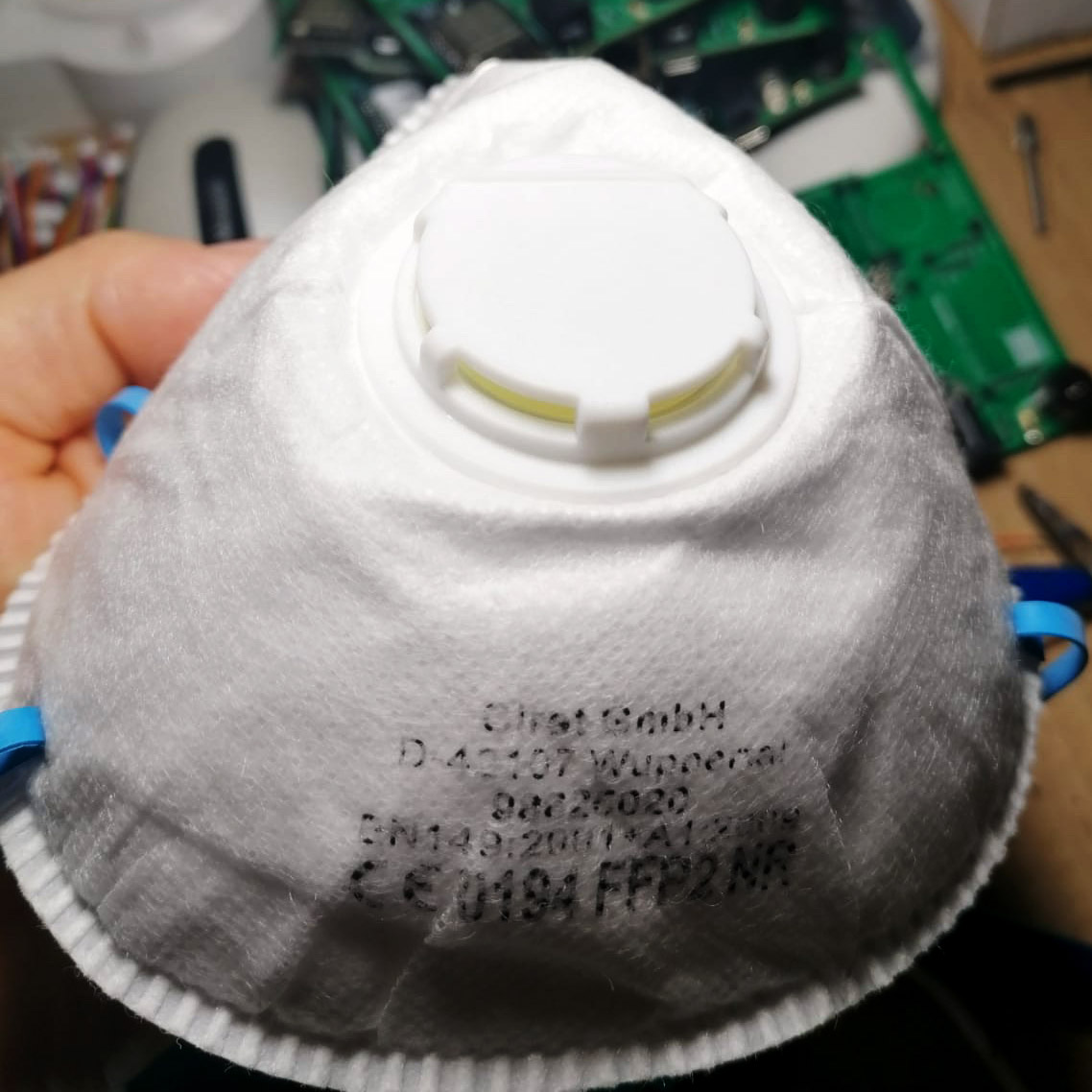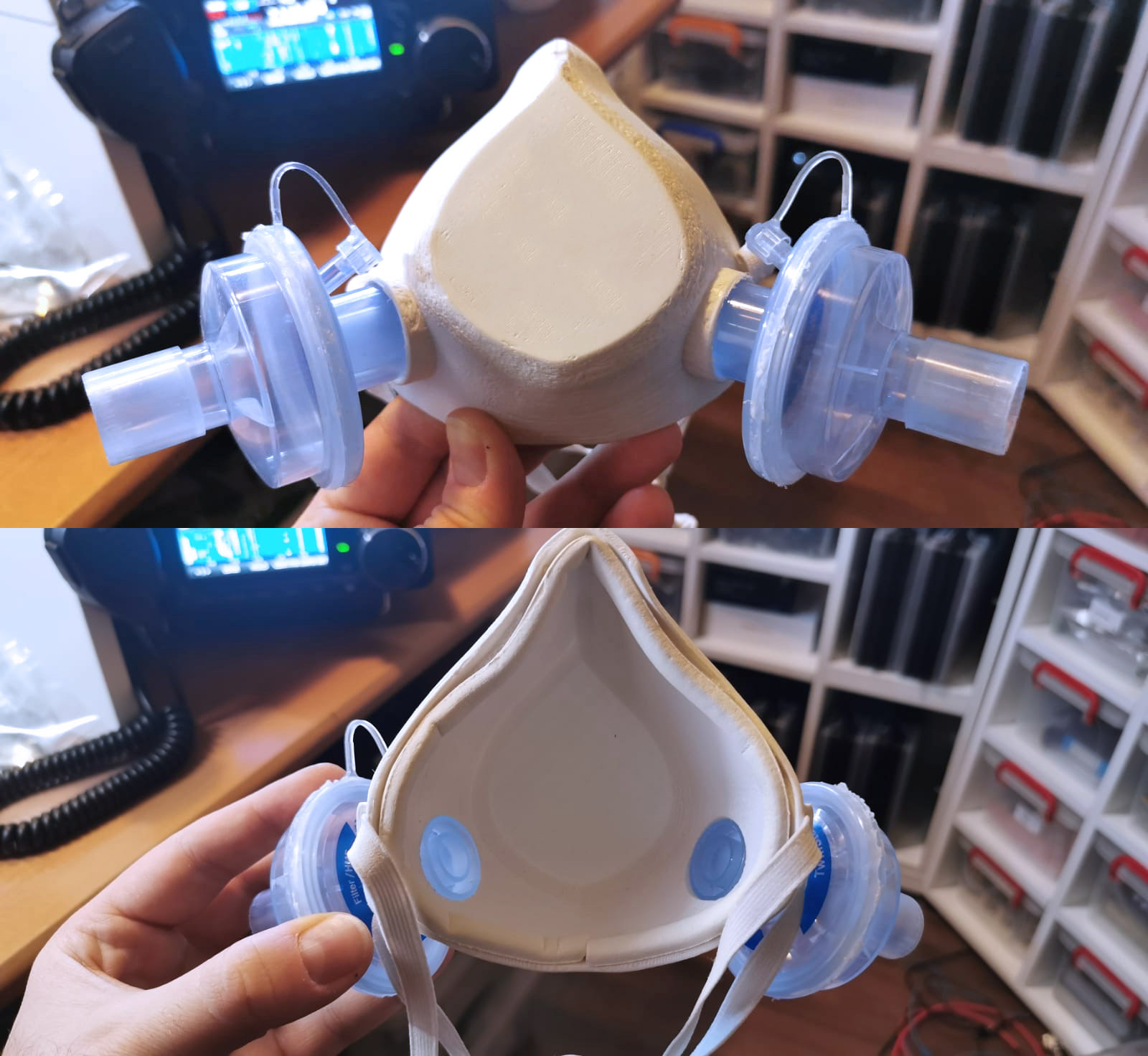You all know about FFP2 masks like the one below:

There are also wet wipes that some suggested they could be used for filters (packed in several layers). How do all these compare? Here are some microscope pictures, showing the differences. All of them are taken against a powerful light source, so any openings in fabric would show right away.

For all three materials the same settings were used: same background light intensity and distance from source to probe, same microscope magnification.
The Wet Wipes have some big problems, and I don’t think they are suitable for air filtering: the fibres are rare, light protrudes straight through (so will the particles), dragging it even slightly will cause more openings. Also, unless it is washed and dried, there will also be emollients and chemicals clogging the fibres and eventually getting to your lungs. I wouldn’t use this.
The cotton pads have thin and dense fibres. Most important they are long so it is unlikely they will easily detach and fly to your lungs. Light doesn’t get through, meaning the filter has no openings, and the absorbed light going through the opaque disk indicated a good thickness.
The FFP2 Mask comes with long plastic fibres. These will surely work great for trapping incoming particles since an electrostatic effect will easily develop on plastic (also on cotton). They are not so dense as the cotton pads so small particles can find a way easier then through the cotton pads. Also more light propagates through the opaque material as in the case of the cotton disk. How’s the winner here? Check the photos and decide for yourself. It is obvious the cotton disks are a nice alternative, easy to procure and easy to replace. The mask’s containers allow for two stacked disks, doubling all this and exceeding the FFP2 by far.
But there are many other options here. The containers can be customised for any filter combination, depending only on what it can be sourced on the local market and stock availability. For sensitive applications, instead of the existing containers, you can use HME filters , here’s an example made by Teo, who used two Draeger HME filters. Their datasheet indicates stopping 99.99% of viruses and bacteria. And they fit right away, with no other modifications:

 Radu Motisan
Radu Motisan
Discussions
Become a Hackaday.io Member
Create an account to leave a comment. Already have an account? Log In.